I want to learn more about Africa so I’m exploring through children’s books. Here is my list of 26 Children’s Books About Kenya. What are your favorite books set in Kenya? Thanks for sharing!
26 Children’s Books About Kenya
For You Are a Kenyan Child by Kelly Cunnane, illustrated by Ana Juan
A young Kenyan boy is supposed to be taking his Grandfather’s cows to the pasture but he gets distracted by the other people in his village. This is a gentle adventure showcasing the day in the life of a rural Kenyan child. Gorgeous illustrations add whimsy and humor to the lyrical text. [picture book, ages 3 and up]
On a Road in Africa by Kim Doner
This is a rhyming picture book about a real animal rescue orphanage in Nairobi, Kenya. The Mama O depicted in the story is based on a real person, Chryssee Perry Martin! Follow the volunteers for a day as they drive to a market to get food and supplies for the orphaned animals including a cheetah, buffalo, warthog, monkeys, birds, and lions! A portion of the book sales will go directly to Mama O to help The Nairobi Animal Orphanage. [picture book, ages 3 and up]
Mama Panya’s Pancakes: A Village Tale from Kenya by Mary Chamberlin and Rich Chamberlain, illustrated by Julia Cairns
As Mama Panya and her young son Adika walk to the market, he invites all the friends he meets to share their pancakes at dinner. Mama Panya worries about how she will feed a crowd with just money enough for food for the two of them. This is a heartwarming story about sharing and the rewards that it brings to creating a community. The back matter pages have more information about life in Kenya, plants and animals Adika and Mama Panya saw on the way to market, and how to speak Kiswahiki. Mama Panya’s pancake recipe is also included! [picture book, ages 4 and up]
Imani’s Moon by JaNay Brown-Wood, illustrated by Hazel Mitchell
Anyone short of stature — I can relate — will love this picture book of little Imani who gets teased for her size but fosters big dreams thanks to the role models her Maasai mother presents to her in the form of African folk tales.
There’s Olapa the goddess of the moon who defeated the god of the sun, and Anansi, the small spider who captured a snake. But it’s the older boys who are young warriors performing adumu, the jumping dance that inspires Imani the most.
She decides she can reach the moon by jumping, jumping, jumping … high into the sky. And, because she believes in herself, she does just that! [picture book, ages 4 and up]
The Maasai people of East Africa live in southern Kenya and northern Tanzania.
Bringing the Rain to Kapiti Plain by Verna Aardema, illustrated by Beatriz Vidal
The tale was discovered in Kenya, Africa more than seventy years ago by the famous anthropologist Sir Claud Hollis.
This rhyming story shows the dependence of all the creatures living in the Kapiti Plain on the rain. Without the rain, the grass turns brown, and the cows are hungry and dry. It falls to Ki-pat the herd boy to change the weather, which he does with the help of an eagle’s feather. His shot pierces the storm cloud, releasing the rain. Referencing this picture book can help kids understand famine in Africa. [picture book, ages 4 and up]
A Kenya Christmas by Tony Johnston, illustrated by Leonard Jenkins
The predominant religion in Kenya is Christianity, which is adhered to by an estimated 85.52% of the total population. Islam is the second largest religion in Kenya, practiced by 10.91 percent of Kenyans. from Wikipedia
This feels like a modern folk tale. Ten-year-old Juma greatest wish is to see Father Christmas but he lives in a remote village in Kenya where no one has ever seen him. His aunt Aida comes to visit and has a plan. Juma recruits a villager, Ole Tunai, to wear the Santa suit that his aunt has brought with her. She also recruits an elephant as a “sleight,” but no one has ever ridden the elephant before. Juma and his best friend Nampaso collect feathers to scatter as snow. It’s a wonderful plan. On Christmas Eve, Father Christmas comes out of the bush on top of an elephant. He distributes presents and then climbs back on the elephant and returns to the bush. It’s a huge success. But when Juma and his aunt return to their home, they find Ole Tunai distraught that he was unable to mount the elephant, and failed every one. As everyone dashes outside, they get one last glimpse of Father Christmas high in the clouds atop an elephant. This Christmas in Kenya is also a Christmas miracle! Juma, now a father himself, tells this story to his children, and it will surely be passed down to grandchildren as well! [picture book, ages 4 and up]
The Princess and the Pea by Rachel Isadora
The classic Princess and the Pea story is retold and set in Africa, referencing Ethiopia, Somalia, and Kenya, specifically. The collage artwork tells the tale with vibrancy and playfulness. [picture book, ages 3 and up]
The Wooden Camel by Wanuri Kahiu, illustrated by Manuela Adreani
by Manuela Adreani
Kenyan author Wanuri Kahiu is also an award-winning filmmaker! This is her story about the Turkana people of northwest Kenya and about keeping hopes and dreams alive. It also reflects on the dry desert climate of northwest Kenya and the harsh reality of droughts. [picture book, ages 4 and up]
Handa’s Hen by Eileen Browne
The Luo are a Nilotic-speaking group, who are believed to have originated from Sudan, and are now settled around the Lake Victoria basin in Kenya and Tanzania. Other Luo groups are found in Uganda, Congo, Ethiopia, and Sudan. Google Arts & Culture
Handa and her friend Akeyo are from the Luo tribe of southwest Kenya. This is a counting book to explore Handa’s village in search of Grandma’s black hen. Along the way, they find two butterflies, three mice, four lizards, five sunbirds, six crickets, seven bullfrogs, eight spoonbills, nine starlings, and ten baby chicks. This is a wonderful way to explore rural Kenya with Handa! [picture book, ages 3 and up]
Handa’s Surprise by Eileen Browne
This sequel to Handa’s Hen provides another counting adventure. In this story, Handa has selected seven different fruits to bring to her friend Akeyo. Along her journey, her fruits are stolen by various animals without her realizing it. She and Akeyo get a big surprise when she arrives. The basket on her head is full of tangerines, Akeyo’s favorite fruit! Kids will delight in the surprise ending while also learning about fruits and animals in Kenya. [picture book, ages 3 and up]
14 Cows for America by Carmen Agra Deedy,
In Kenya, Kimeli comes home to his Maasai village after studying abroad. He has something important to discuss with his village elders. He remembers 9/11 and the suffering in New York. To the Maasai, the cow is life. Kimeli offers his only cow Enkarûs; others join him in this ultimate sacrifice. Together they gift fourteen precious cows to America “because there is no nation so powerful that it cannot be wounded, nor a people so small that they cannot offer mighty comfort.” This is based on the true story of Kimeli Naiyomah. [picture book, ages 5 and up]
 Barack by Jonah Winter, illustrated by AG Ford
Barack by Jonah Winter, illustrated by AG Ford
Wow! This picture book manages to capture the essence and complexity of Barack Obama, the first African American president of the United States. His journey was rooted multi-nationally, in Kenya, Indonesia, as well as Kansas, Hawaii, and Chicago. His message of hope and change began in his childhood and he continues to further the dream of Martin Luther King, Junior where “children will live in a nation where they will not be judged by the color of their skin but by the content of their character.” Barack Obama exemplifies Dr. King’s wish. [picture book biography, ages 4 and up]
Mama Miti: Wangari Maathai and the Trees of Kenya by Donna Jo Napoli, illustrated by Kadir Nelson
Wangari Muta Maathai changed Kenya tree by tree, becoming the first African woman to win the Nobel Peace Prize for her contribution to sustainable development, democracy, and peace.
This gorgeously illustrated picture book tells the inspirational story of Wangari Maathai and how she founded the Green Belt Movement; an African grassroots organization that empowers people to mobilize and combat deforestation, soil erosion, and environmental degradation.
Today more than 30 million trees have been planted throughout Mama Miti’s native Kenya. [picture book, ages 4 and up]

Wangari Maathai: The Woman Who Planted Millions of Trees by Franck Prevot and Aurelia Fronty, illustrated by Aurelia Fronty
In the shade of the big mugumo, her mother teaches her that a tree is worth more than its wood, an expression that Wangari never forgets.
In Kenya, the British colonists grow rich by cutting down trees to plant tea. Wangari witnesses the destruction of the trees as a child and returns from education abroad to find that this practice has changed the ecology. Wild animals are rare now, food-growing farms are scarce, and the rivers are muddy from erosion.
She creates the Green Belt Movement to reforest her country, recruiting women to help. It’s dangerous to oppose the government officials who have made fortunes from razing forests, but Wangari is not deterred. Her trees help to build bridges between tribes, and she becomes the assistant minister of the environment, after helping to bring down President Daniel Arap Moi. Wangari Maathai received the Nobel Peace Prize in 2004. [picture book biography, ages 6 and up]
Planting the Trees of Kenya: The Story of Wangari Maathai by Claire A. Nivola
“When the soil is exposed, it is crying out for help, it is naked and needs to be clothed in its dress. That is the nature of the land. It needs color, it needs its cloth of green.” Wangari Maathai
When Wangari was young, her family’s farm in Kenya was lush with green. Fig, olive, crotons, and flame trees were abundant. She went away to the United States to study biology but when she returned, she found her homeland had changed into monoculture farms that were making her people sick, weak, and poor. She decided to fix the problem by becoming the solution. She taught the women how to plant trees with the seeds from the remaining trees. It wasn’t easy work, but slowly, the trees took root, and the numbers grew. And with the return of the trees, the women and their families were healthier. They were able to grow vegetables again with the reversal of the devastating soil erosion. Wangari returns Kenya’s cloth of green to its people. [picture book biography, ages 5 and up]
Seeds of Change: Wangari’s Gift to the World by Jen Cullerton Johnson, illustrated by Sonia Lynn Sadler
Wangari’s mother introduced her to the mugumo tree, telling her that their people, the Kikuyu of Kenya, believe that their ancestors rest in the tree’s shade. The tree is also important as a fruit tree that many species including geckos, humans, and elephants enjoyed. Her parents sent her to school, unusual for a girl at that time and she excelled at academics, continuing her higher education studies in the United States. When she returned, she found that trees were being cut down in Kenya to make way for tea and coffee plantations, destroying the land through soil erosion. Wangari decided to plant trees and won the support of other women. Together, they started The Green Belt Movement, planting more than 30 million trees. Wangari did not let corrupt politicians or greedy business people intimidate her. She spread her message as the “Mother of Trees” and won a Nobel Peace Prize in 2004 for her work. [picture book biography, ages 6 and up]
Wangari’s Trees of Peace: A True Story from Africa by Jeanette Winter
This is a picture book to engage very young readers with Wangari Maathai’s story about environmental activism to bring the trees and kitchen gardens back to Kenya. Jeanette Winter captures the breadth of Wangari’s achievement in this lyrical and powerful true story. [picture book biography, ages 3 and up]
Planting Peace: The Story of Wangari Maathai by Gwendolyn Hooks, illustrated by Margaux Carpentier
This advanced picture book takes a deeper dive into the life and accomplishments of Wangari Maathai. Her struggles are depicted in more detail in this beautifully illustrated picture book such as the job offer at a university that was rescinded because she was not a man, the challenge of getting seeds, and her arrest because she spoke out against government corruption. Readers will appreciate her accomplishments with this additional detail about the obstacles that Wangari surmounted every step of the way. It’s too bad that this newest picture book on Wangari Maathai published in 2023 didn’t create this book as a middle grade picture book biography. The text-dense pages would have been more suited for an older audience and also there are already quite a lot of great picture book biographies on Wangari Maathaiit makes this book feel repetitive in the marketspace. [picture book biography, ages 7 and up]
The International Day of the Girl: Celebrating Girls Around the World by Jessica Dee Humphreys and the Hon. Rona Ambrose, illustrated by Simone Shin
The International Day of the Girl celebrated on October 11, was created as a holiday to teach girls about their rights at a young age so that they may exercise them when they get older. It’s a day to learn about gender equality and girls’ rights. Girls from around the world are profiled including Abuya from Kenya. Abuya uses her carpentry skills to build an outhouse because there are no toilets at their high school. Without proper toilets, girls don’t feel safe and are less likely to continue their education. [picture book, ages 7 and up]
Greetings from Somewhere: The Mystery of Lion’s Tail by Harper Paris, illustrated by Marcos Calo
Ethan and his twin Ella are on safari with their parents at the Maasai Mara National Reserve in Kenya. They are hoping to see the Big Five: rhinoceros, leopard, Cape buffalo, African elephant, and lion. The lion proves the most elusive to spot. With the help of Dr. Alex Broad, a scientist studying lions that know their grandfather and their new Maasai friends, Amina and Jomo, Ethan and Ella are in for a big surprise. [early chapter book, ages 5 and up]
Brothers in Hope: The Story of the Lost Boys of Sudan by Mary Williams, illustrated by R. Gregory Christie
My 5th-grade daughter’s girls’ book club got invited to the 5th-grade boys’ book club because they had a special guest, William Maliul, an articulate and engaging Lost Boy of Sudan, who came to speak about his experiences in Sudan, Ethiopia, Kenya, and the United States.
When he crossed the Gilo River because the Ethiopian army was shooting at them, the crocodiles were scared away by the crush of people jumping into the river. Those from the mountainous regions of Sudan didn’t know how to swim and drowned. The cow herders like himself were all taught to swim at age 5 by a rite of passage the boys all went through which was to be thrown into the river to sink or swim. He said that it was important to swim as the cows had to cross the river and that you took a calf and led it across the river and all the cows would follow in a line. It sounded amazing and like it was still somewhat surprising to him too! At the refugee camps, the books mentioned that there was not enough food. William was specific: there was only enough food to eat one day out of six. So, he’d go to school all day and come home to no food, and do the same for five days until the next ration of food came. [picture book, ages 7 and up]
When The Stars Are Scattered by Victoria Jamieson and Omar Mohamed
Omar Mohamed and Victoria Jamieson have penned an unflinching memoir about what life is like for two young boys in a refugee camp in Kenya. Their father was killed in front of them in Somalia and they don’t know what happened to their mother. It was a small miracle that they made it to this refugee camp without perishing. Here, there are chronic food shortages, limited access to education, and the danger of wandering too far from their section of the camp. But there is also love and community. Omar and Hassan have Fatuma, a legal guardian who treats them like her own sons. Omar wants to help his younger brother Hassan, who is nonverbal, and education is his only means out. When hope is in short supply, Omar finds that there is a way home after all. [graphic novel, ages 9 and up]
*Pair this with Brothers in Hope and A Long Walk to Water.
Mwikali and the Forbidden Mask by Shiko Nguru
Fans of Rick Riordan’s Percy Jackson series will enjoy this action-adventure novel of Mwikali, a 12-year-old girl, who starts middle school in Nairobi only to discover that she has a secret superpower. Because of her ancestral bloodline, she has the ability to predict the future AND see monsters. (cue scene from The Lightning Thief when Percy Jackson discovers his pre-algebra teacher, Mrs. Dodds, is one of The Furies out to get him.) Like Percy Jackson, Mwikali gains a posse of new friends to help her, and they also have newfound magical abilities. East African mythology is woven into this fast-paced adventure. Because this book is about half the length of a Percy Jackson adventure, it’s perfect for readers who enjoy this genre but are not quite ready to tackle a longer book. [middle grade, ages 9 and up]
Kenya by Christine Juarez
Vivid photos accompany pared-down text that gives an overview of what it is like to live in Kenya. This is perfect to read to preschool-age children who might be traveling, either in person or via an armchair, to Kenya for a safari! [nonfiction picture book, ages 3 and up]
A to Z Kenya by Justine and Ron Fortes
This is straightforward nonfiction for kids who like to read encyclopedias, but the alphabet format keeps the information short and sweet while also giving a good overview of both life in the city and rural villages in Kenya. [nonfiction picture book, ages 7 and up]
Kenya: Enchantment of the World by Michael Burgan
This is the old-school style of nonfiction books that I used to use as a child to research a topic for a book report. Kids who like nonfiction facts will enjoy the depth of information presented in this nonfiction series. It covers all aspects of life in Kenya from politics and religion to its diverse people and geography. [nonfiction middle grade, ages 10 and up]
p.s. Related posts:
10 Great Picture Books to Learn About Africa
10 Picture Books About Africa That Teach Empathy
5 Feel-Good Books About Africa
Children’s Africana Book Awards and Kid Lit Blog Hop
Africa: Bamileke, fashion, chocolates for Darfur, and more
2010 Africana Awards for Best Children’s Literature
To examine any book more closely at Indiebound or Amazon, please click on image of book.
As an Amazon and IndieBound Associate, I earn from qualifying purchases.
Follow PragmaticMom’s board Multicultural Books for Kids on Pinterest.
Follow PragmaticMom’s board Children’s Book Activities on Pinterest.
My books:
Food for the Future: Sustainable Farms Around the World
- Junior Library Guild Gold selection
- Selected as one of 100 Outstanding Picture Books of 2023 by dPICTUS and featured at the Bologna Children’s Book Fair
- Starred review from School Library Journal
- Chicago Library’s Best of the Best
- Imagination Soup’s 35 Best Nonfiction Books of 2023 for Kids
Amazon / Barefoot Books / Signed or Inscribed by Me


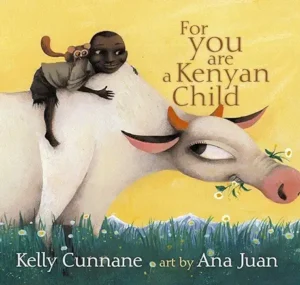















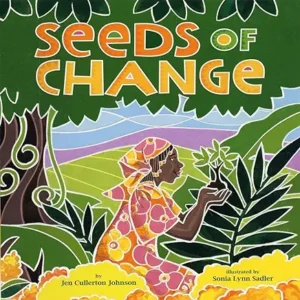
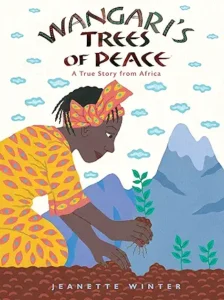
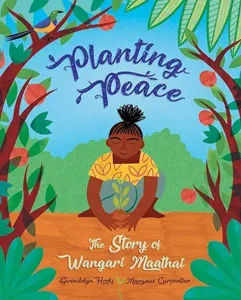







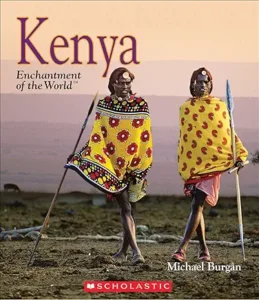










Great list here, Mia. I also love the story behind NEEMA’S REASON TO SMILE because it’s based on a real school in Kenya. https://www.patriciamnewman.com/books/neema-dreams/
Thank you for participating in #ReadYourWorld 2024 🙂
What a comprehensive list of books about Kenya! Thank you for putting this together!